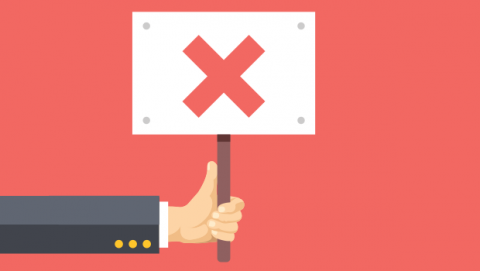Bitcoin is at the peak of the hype curve, challenging our notions of what currency actually represents and forcing us to re-think the role of a central bank in maintaining a currency’s value. There are certainly some aspects of Bitcoin and other e-currencies that should give us pause, such as the fact that among the biggest beneficiaries of its distinguishing properties (anonymity, privacy) are people engaged in illegal enterprises such as money laundering, or the fact that the activity that creates value, mining bitcoins, is actually harmful to the planet, wasting enough electricity to power many countries.
But, my intention is not to focus on Bitcoin, but rather on its enabling technology, known as blockchain, which enjoys almost as much hype as Bitcoin itself and is being touted as the ideal solution for a multitude of problems. Unfortunately, because of the hype around blockchain, it is being proposed as the solution for many use cases where there already exist better and more efficient solutions. The result is a plethora of pilot projects based on blockchain, but very few systems that are actually launched and running in production. This article will explore the potential uses for blockchain and provide criteria that define the characteristics of an appropriate use case.
The central idea of blockchain
First off, let’s explain what blockchain is and how it works. In the real world, there are some questions that can only be answered by turning to a central registry, e.g., who owns a given plot of land? But, there are some questions that can be answered by asking anyone, e.g., who is the current Queen of England, who lives in the White House?
The idea of blockchain is to eliminate centralized ledgers and replace them with distributed ledgers, where any fact can be proven because “everybody knows.” Instead of maintaining a central ledger, you distribute the ledger to everyone, using digital signatures to ensure the integrity of the data. Then, when you want to verify a fact, e.g., who owns a plot of land, just “ask everybody”, i.e., poll a subset of the distributed ledgers, because “everybody knows.”
[ Can you explain blockchain to non-techies? Read our related story, How to explain blockchain in plain English. ]
The advantages of a distributed ledger implemented via blockchain over a centralized ledger are clear. You save the time and effort required to implement a secure, centralized ledger. You eliminate the need to have constant communication with the centralized ledger in order to answer questions. You eliminate the possibility of cheating by whoever is maintaining the central ledger.
There are many use cases involving a central ledger where a blockchain distributed ledger has been considered. For example:
- Supply chain management for a supermarket
- Tracking test results for drugs that must be tested by a number of distinct entities
- Tracking ownership of diamonds and other rare gems
- Tracking automobile ownership
- Tracking the availability and expiry date of medical supplies that are distributed around the country and are meant to be used in case of emergency
- Collecting and processing data collected at the edge in an Internet of Things (IoT) system
- Managing ticket sales for a concert
[ Where is blockchain making tangible progress? See our related story: Blockchain in action: 5 interesting examples. ]
3 key blockchain characteristics
But, before you start re-implementing every central ledger as a distributed ledger, it is important to recognize the characteristics of this technology:
Throughput. A blockchain-based ledger can only handle about 10 transactions per second, making it a very slow database. It may be appropriate for applications that require low throughput, e.g., car title because not that many cars within a given state change hands every second.
But, it will not stand up to high throughput applications, e.g., managing ticket sales for a concert where most of the transactions occur in the last 24 hours before the concert. Technological advances will surely increase the throughput of blockchain-based ledgers, but they will still remain far slower than commercial databases.
Consensus. In order for a blockchain ledger to work, all parties must agree to use the same ledger. This is feasible when there is a central organization (e.g., a government agency) that can force all parties to use the same ledger. But, in many industries, the competitive landscape is too fragmented to come to any sort of consensus as to who should run the ledger. Take the music industry as an example: It would probably be difficult for Sony, Universal and Warner to all agree on who should run the ledger of music rights.
Decentralized communications. A centralized ledger requires constant communication to be available to the centralized ledger. Blockchain, on the other hand, can work even when there is no communication channel available. This sounds like an advantage for blockchain, until you realize that most of the world now has continuous data communications. In this environment, blockchain loses one of its central advantages, and implementing a centralized ledger will almost always be cheaper, faster and more reliable than implementing a distributed ledger.
Determining blockchain's fit
When you put it all together, it requires a very special set of circumstances for blockchain to be the right solution: The domain must have a central authority that can force all parties to use the distributed ledger, the throughput requirements must be low, and there must be a compelling reason not to implement a centralized ledger, e.g., lack of continuous data communications.
There are such use cases in the world, but they are a significant subset of the use cases where blockchain pilots are being developed. That’s why so few blockchain pilots actually get deployed into production.
In far too many cases, blockchain has become a technology in search of a problem with promises that the big breakthrough for blockchain is just around the corner. Use the criteria described here to decide whether blockchain is the best solution for your use case. If yes – great. If not, don’t get caught up in the hype.
[ Read also: How to tell when moving to blockchain is a bad idea. ]




